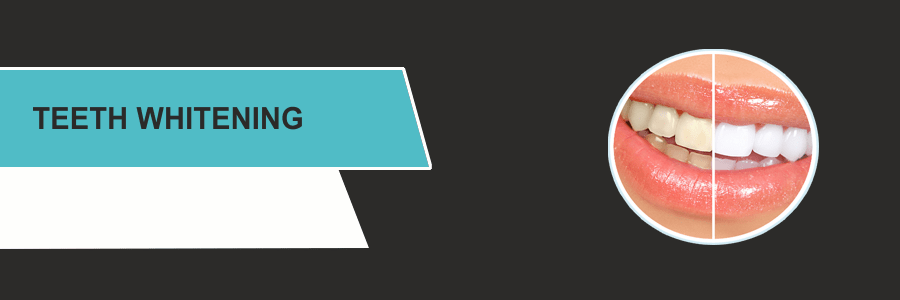
Bleaching of Teeth (teeth whitening)
The crown of a tooth is made up of two mineralized layers. Enamel is a white, heavily mineralized, porcelain-like, external layer. The inner layer, dentin, is the yellowish, less mineralized, supporting layer. Over time, the enamel breaks down and micro-fractures can form in the outer layer. These micro-fractures pick up stains, debris, pigmentation, and start to show the yellow dentin support layer. The degree of staining over a lifetime is influenced by foods (curry, coffee), drinks (red wine), habits (smoking, teeth grinding), and medications (Tetracycline). There is also a genetic component to the color of your dentin that affects how white your teeth are.
How bleaching works?
Bleaching (whitening) products contain an active ingredient called hydrogen peroxide or carbamide peroxide. Whitening activates the peroxides to release oxygen molecules that enter the enamel micro-fractures to break down stain pigmentation. This release of oxygen can occur over time or rapidly. Custom take home whitening treatments stimulate the release of oxygen over a period of a few hours. Laser whitening, such as Zoom, causes the rapid release of oxygen within a few minutes. This is accomplished by using a high-intensity light source. The main side effect of bleaching is temporary tooth sensitivity to cold. This is because the micro-fractures and your natural enamel pores are open during treatment. These micro-fractures and pores will re-mineralize over time. Special toothpaste can help reduce sensitivity by accelerating this re-mineralization process.
What teeth whitening is required?
The outer layer of a tooth is called the enamel. The color of natural teeth is created by the reflection and scattering of light off the enamel, combined with the color of the dentin under it. Your genes affect the thickness and smoothness of the enamel. Thinner enamel allows more of the color of the dentin to show through. Having smoother or rougher enamel also affects the reflection of light and therefore the color.
Every day, a thin coating (pellicle) forms on the enamel and picks up stains. Tooth enamel also contains pores that can hold stains.
The most common reasons for teeth to get yellow or stained are:
- Using tobacco
- Drinking dark-colored liquids such as coffee, cola, tea and red wine
- Not taking good care of your teeth
Aging makes teeth less bright as the enamel gets thinner and the dentin becomes darker.
It is also possible to have stains inside the tooth. These are called intrinsic stains. For example, intrinsic stains can be caused by exposure to too much fluoride as a child while teeth are developing. Other causes include tetracycline antibiotics. They can stain a child’s teeth if taken by a mother during the second half of pregnancy or by a child who is 8 years old or younger. Teeth are still developing during these years. Trauma may also darken a tooth.
Tooth whitening is most effective on surface (extrinsic) stains.
Tips to Prevent Tooth Discoloration
Once you’ve completed a whitening treatment, there are a few steps you can take to maintain your whiter smile.
- Avoid stain-causing foods and beverages– coffee, tea, wine, sports drinks, hard candy, berries and tomato sauce are all foods that can cause tooth discoloration.
- Use a straw– when drinking beverages, use a straw to keep stain-causing dyes away from your teeth.
- Quit smoking– smoking tobacco can cause teeth to become discolored. Eliminating tobacco can help keep your teeth bright.
